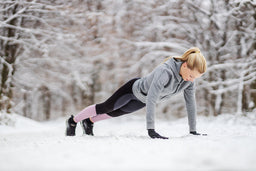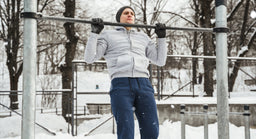
The Benefits of Parallette Training
The Benefits of Parallette Training
Typically, parallette bars might be associated with professional gymnasts but the fitness world is waking up to the benefits these simple pieces of equipment can deliver. The parallette bar is fast becoming an indispensable piece of fitness kit that can build muscle, improve core strength and help fitness fans achieve the physique they’re after, all without costing a fortune.
What is parallette training?
Parallettes are the bars used in gymnastics to simulate the parallel bars but these pieces of equipment can be hugely beneficial to those outside gymnastics too. While similar to the push-up bars or dips bars that you’ll commonly see in the gym, parallettes are generally lower to the ground.
Parallette exercises involve supporting your body weight on your hands and maintaining positions over an extending period of time but they’re excellent for building up core muscle and leg strength too. The adaptable body weight exercises are ideal for gaining lean muscle mass, whether you’re just starting out using the techniques or are ready to progress to intermediate or advanced parallette skills.
Parallette training is growing in popularity as fitness fans look for ways to achieve their aims and the sculpt their body. The physique of gymnasts, relatively simple beginner exercises, low cost, and evident results have all contributed to the rise of parallette exercises. Even the CrossFit fitness regimen, which has developed a cult following, incorporates aspects of parallette training.
The key benefits of incorporating parallette training
Parallette training has become huge in recent years and there are plenty of reasons for choosing to incorporate the bars into your training routines. The exercises for parallette training might look simple but the can deliver a wealth of benefits to help you meet your fitness goals.
Build your core
If you’re looking to improve your core strength and achieve a defined, shredded look, parallette training is the perfect workout to incorporate. Your core is a fundamental part of being able to do and hold many of the exercises, such as the L-sit, and you’ll notice the improvements the techniques bring quickly.
Improve your body control
Parallette training is all about building your control and co-ordination. With a focus on holding positions and gradual movements, parallette bars are ideal for not only building your core strength but taking body control to the next level. It’s a benefit that won’t only improve your physique but can help you in a range of sports and other exercises.
Gain full body power
Parallette bars are versatile and can be used across a wide range of exercises, allowing you to target specific areas of your body through a single piece of equipment. Parallette bars can help you gain full body power with the ability to work out different muscle groups to suit your aims.
7 beginner parallette exercises to try now
If you’re keen to get started on your parallette routine, try out these 7 exercises to build your strength and balance. You’ll be ready to advance in no time.
1. Parallette dips – Sitting between the parallette bars, place your hands on the bar and lift yourself off the ground so your elbows are locked. Then lower your hips straight down before pressing back up for a rep. This exercise is easy to modify if you’re looking for a challenge, simply place your feet on a low surface rather than the ground.
2. Push-ups – Push-ups are already a staple in strength regimes but with parallette bars you can take them up a step and really benefit. Place your hands on the bars with your legs straight out in a plank position to complete push-ups. Using parallette bars means you can take your push-ups lower so that your chest dips below the bars, giving you an increased work-out to strengthen your chest, back, and arms.
3. Tuck hold – This isometric hold helps to build up your core strength. To start, squat between the parallettes and grasp the bars. Bring your feet off the ground, bringing your knees to your chest and hold the position. If you’re new to parallette training this is a great foundation exercise that can help you achieve other skills, including the L-sit.
4. L-sit – This can be a difficult exercise if you’re new to parallette training but one that can rapidly improve your abdominal strength. Sit between the parallette bars with your hands on each. You then want to lift yourself completely off the floor, including your legs, into a L position, locking your elbows. Start by holding the position for 5 seconds, gradually increasing as your strength and stamina improves. Once you’ve mastered the L-sit, you can try the V-sit – where your feet are raised and held above the position of your hips.
5. The beginner planche – The planche is a more advanced parallette exercise – where a user lifts themselves on the parallette bars so they are horizontal and face down, with their legs held out directly behind them. For beginners, the tuck planche is the place to start. Rather than holding your legs out behind you, keep them bent with your knees pulled towards your chest, keeping your back straight. Gradually increase how long you can hold your position.
6. Jump through – This exercise is perfect for building up your strength and laying the foundation for tackling advanced parallette exercises. Start in the plank position with your hands on the bars. You then want to jump your legs through your arms to end in the dip position. As you jump through pull your knees to your chest.
7. Handstand push-ups – Once you’ve become comfortable using the parallette bars, you can advance to handstand push-ups. Full-depth and unsupported handstand push-ups are difficult but there are some ways to can get started with these straight away. Place your bars against a wall and placing your hands on them do a handstand, with your feet resting on the wall. Full-depth push-ups in this position are challenging, start by lowering yourself halfway and gradually going lower as your strength builds up.
Tags: parallette training, parallette bars, beginner parallette exercises, parallette exercises,

































